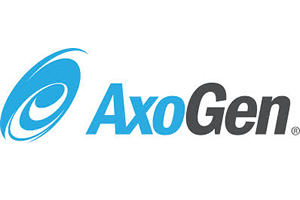Source: Rayan Ahmad
Understanding ROIC and WACC: Unpacking AxoGen’s Financial Performance
AxoGen, Inc. (NASDAQ:AXGN), a leader in the development and marketing of surgical solutions for peripheral nerve injuries, is currently under financial scrutiny. With a focus on products that aid in nerve repair and protection, AxoGen operates within the healthcare sector, facing competition from companies like AtriCure, Inc., Tactile Systems Technology, Inc., BioLife Solutions, Inc., AnaptysBio, Inc., and Assembly Biosciences, Inc.
However, recent financial analysis reveals that AxoGen’s Return on Invested Capital (ROIC) stands at a starkly low 2.07%, compared to its Weighted Average Cost of Capital (WACC) of 8.72%. This statistic is indicative of inefficient capital utilization, which raises significant concern for investors seeking optimal returns on their investments.
Decoding the Implication of AxoGen’s ROIC and WACC
ROIC, or Return on Invested Capital, is a crucial performance measurement that indicates how effectively a company utilizes the money invested in its operations. It is calculated by dividing net income by invested capital, and the resultant percentage reveals the efficiency of the company’s capital investment. A higher ROIC typically signifies better capital utilization, which can lead to higher investor confidence and potentially, a greater market value.
On the other hand, WACC, or Weighted Average Cost of Capital, is the average interest rate a company must pay to finance its operations, including debt and equity. A lower WACC implies that a company incurs less expense to finance its operations, which could lead to increased profitability.
However, when a company’s ROIC is lower than its WACC, like in AxoGen’s case, it is a clear indication that the company is not generating returns that exceed its cost of capital. This situation is unfavorable for both the company and its investors, as it points towards inefficient capital utilization and a potential decrease in company value.
Comparing AxoGen’s Performance with its Competitors
In comparison to its peers, AxoGen’s position appears to be indicative of a larger trend within the healthcare sector. AtriCure, Inc., with a negative ROIC of -6.47% and a WACC of 11.01%, has a ROIC to WACC ratio of -0.59. This reveals that AtriCure, like AxoGen, is struggling to generate returns over its cost of capital.
Similarly, BioLife Solutions, Inc. and AnaptysBio, Inc. also reflect negative ROICs of -4.85% and -28.56%, respectively, with WACCs of 12.57% and 9.10%. The negative ROIC indicates that these companies are experiencing challenges in generating enough returns to exceed their capital costs.
Highlighting the Inefficiency of Assembly Biosciences, Inc.
However, the company that stands out with the highest inefficiency in capital utilization is Assembly Biosciences, Inc. With a significantly negative ROIC of -127.67% and a WACC of 6.45%, it leads to a ROIC to WACC ratio of -19.80. This starkly negative ratio emphasizes the company’s inefficiency in utilizing its capital.
In conclusion, it is crucial for potential investors and stakeholders to consider these metrics while making informed decisions. While AxoGen’s current financial performance raises alarms about inefficient capital utilization, it is essential to evaluate these numbers in the broader context of industry trends and company-specific factors.

